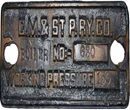Old recycled proposals or boilerplate in the form of well-prepared model sections from your proposal library seem like the right answer to speed up your proposal development process and save you precious B&P dollars. It is great to have a proposal library, and starting from scratch every time you craft a proposal response flies in the face of all arguments for efficiency. Used incorrectly, however, the boilerplate and recycled text is dangerous. So let’s examine the pros and cons of using boilerplate:
PROs:
1. If your industry is such that your products and solutions are standardized, putting proposals together becomes an assembly line job using a software solution like Qvidian while implementing rigorous quality control. Boilerplate is essential, but to serve you well, you have to invest infrequently updating it, and maintaining rigorous configuration control.
2. Boilerplate in the form of a template with good instructions is useful when you have sections of the proposal that won’t affect evaluation as much, and that tend to be standard, such as the subcontracting plan.
3. Certain sections, like past performance, resumes, and other pieces, if properly maintained and compiled into exhaustive descriptions of every facet of the project or person’s capabilities, are invaluable in helping the proper reference selection. They will save your project personnel’s time answering the same questions repeatedly and enable your proposal staff to ask better questions when further tailoring the template to the specific RFP.
4. Boilerplate is great for jogging someone’s memory on what they need to think about in a specific section. It is good for generating ideas when you are drawing a blank on what you should discuss in a specific section. It is even better when your boilerplate section is a hybrid template and brainstorming checklist, reminding what questions you should answer and what decisions you should reach when you are formulating a solution for a specific approach. It will also remind you of the brilliant solutions you may have devised before and now forgotten. It may even serve as a catalyst for new solutions not in the boilerplate.
5. For those who don’t like to start with a blank page, boilerplate provides something to edit initially. If the author doesn’t stop there, he or she may have an easier time completely rewriting the section as appropriate for the new project.
CONs:
1. An evaluator can see boilerplate from a mile away. Humans have a built-in capacity to tell that something is wrong with the tone – something is off – and therefore we instantly pick up on impersonal messaging – even if on the surface it looks tailored to the customer. If you don’t believe it, test it yourself, and you will see that it’s true.
2. There may be leftover artifacts from past proposals that sneak into the current proposal, offending or confusing the customer. They may not be as simple as a new customer’s name, and instead be hard to pick out without a fresh, critical look. And with that look, you would have been better off brainstorming and rewriting the whole thing from scratch.
3. Many businesses are misled to believe that they should reuse their old proposal because it won – it must have been good if it won, so why not use it again? But it may be that your writing had little to do with the decision to award to you – it may have been based on other factors such as cost, or a competitor submitting an even worse proposal.
4. Many writers will spend more time tailoring the sections than writing from scratch, as they drown in the sea of inapplicable boilerplate. If you doubt that writing from scratch is faster than starting with boilerplate, take our Writing Persuasive Federal Proposals course (http://bit.ly/I1tTrh) where we teach you speed-writing and show you how much faster it is to start without an excessive clutter of cut-and-paste words.
5. Boilerplate will create an illusion that the section is done, when it actually needs to be completely redone (a “placeholder text” effect).
6. A well-written boilerplate section creates an illusion that this is what you should say in your current similarly titled section with a similar set of requirements – “it sort of sounds right” – while the customer needs to hear something completely different in this proposal/project scenario.
After all that’s been said, our recommendation is that you should build a library of reusable content. Everything should go in – all the graphics you have used, resume, past performance write-ups, various plans, management, and technical sections, and so on. But the use for this content should never be “cut and paste, and then wade through to customize.” The use should be to read-only, to stimulate ideas for the new solution. In most cases, you should turn mere boilerplate into templates with checklists of possible solutions to use in brainstorming sessions. But be judicious. Just like sharp kitchen tools, your boilerplate library has to be used intelligently to be effective and could cause great harm if you are not careful.
Contact us to learn more.

